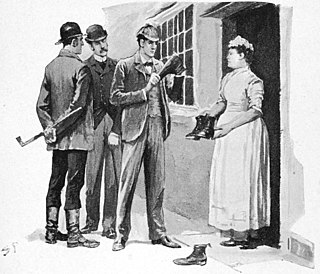
Detective fiction is a subgenre of crime fiction and mystery fiction in which an investigator or a detective—whether professional, amateur or retired—investigates a crime, often murder. The detective genre began around the same time as speculative fiction and other genre fiction in the mid-nineteenth century and has remained extremely popular, particularly in novels. Some of the most famous heroes of detective fiction include C. Auguste Dupin, Sherlock Holmes, and Hercule Poirot. Juvenile stories featuring The Hardy Boys, Nancy Drew, and The Boxcar Children have also remained in print for several decades.
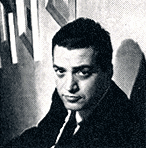
Alfred Bester was an American science fiction author, TV and radio scriptwriter, magazine editor and scriptwriter for comics. He is best remembered for his science fiction, including The Demolished Man, winner of the inaugural Hugo Award in 1953.
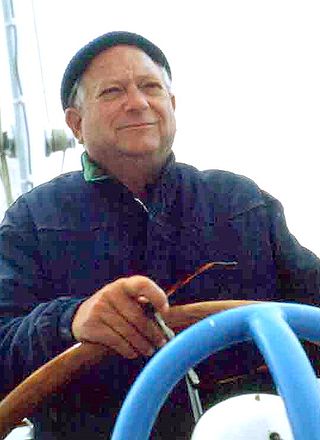
John Holbrook Vance was an American mystery, fantasy, and science fiction writer. Though most of his work has been published under the name Jack Vance, he also wrote several mystery novels under pen names, including Ellery Queen.

Ellery Queen is a pseudonym created in 1928 by the American detective fiction writers Frederic Dannay (1905–1982) and Manfred Bennington Lee (1905–1971). It is also the name of their main fictional detective, a mystery writer in New York City who helps his police inspector father solve baffling murder cases. From 1929 to 1971, Dannay and Lee wrote around forty novels and short story collections in which Ellery Queen appears as a character.

Ferguson Wright Hume, known as Fergus Hume, was a prolific English novelist, known for his detective fiction, thrillers and mysteries.
Donald Bengtsson Hamilton was an American writer of novels, short stories, and non-fiction about the outdoors. His novels consist mostly of paperback originals, principally spy fiction, but also crime fiction and westerns, such as The Big Country. He is best known for his long-running Matt Helm series (1960-1993), which chronicles the adventures of an undercover counter-agent/assassin working for a secret American government agency. The noted critic Anthony Boucher wrote: "Donald Hamilton has brought to the spy novel the authentic hard realism of Dashiell Hammett; and his stories are as compelling, and probably as close to the sordid truth of espionage, as any now being told."

Lloyd Biggle Jr. was an American musician, author, and oral historian.

Richard Horatio Edgar Wallace was a British writer of sensational detective, gangster, adventure, and sci-fi novels, plays and stories.

Arthur Benjamin Reeve was an American mystery writer. He is known best for creating the series character Professor Craig Kennedy, sometimes called "The American Sherlock Holmes", and Kennedy's Dr. Watson-like sidekick Walter Jameson, a newspaper reporter, for 18 detective novels. Reeve is famous mostly for the 82 Craig Kennedy stories, published in Cosmopolitan magazine between 1910 and 1918. These were collected in book form; with the third collection, the short stories were published grouped together as episodic novels. The 12-volume publication Craig Kennedy Stories was released during 1918; it reissued Reeve's books-to-date as a matched set.

Ellery Queen's Mystery Magazine is a bi-monthly American digest size fiction magazine specializing in crime fiction, particularly detective fiction, and mystery fiction. Launched in fall 1941 by Mercury Press, EQMM is named after the fictitious author Ellery Queen, who wrote novels and short stories about a fictional detective named Ellery Queen. From 1993, EQMM changed its cover title to be Ellery Queen Mystery Magazine, but the table of contents still retains the full name.
Walter Brown Gibson was an American writer and professional magician, best known for his work on the pulp fiction character The Shadow. Gibson, under the pen-name Maxwell Grant, wrote "more than 300 novel-length" Shadow stories, writing up to "10,000 words a day" to satisfy public demand during the character's golden age in the 1930s and 1940s. He authored several novels in the Biff Brewster juvenile series of the 1960s. He was married to Litzka R. Gibson, also a writer, and the couple lived in New York state.

Donald Edwin Westlake was an American writer with more than one hundred novels and non-fiction books to his credit. He specialized in crime fiction, especially comic capers, with an occasional foray into science fiction and other genres. Westlake created two professional criminal characters who each starred in a long-running series: the relentless, hardboiled Parker, and John Dortmunder, who featured in a more humorous series.
Dr. Richard Austin Freeman was a British writer of detective stories, mostly featuring the medico-legal forensic investigator Dr. Thorndyke. He invented the inverted detective story. This invention has been described as Freeman's most notable contribution to detective fiction. Freeman used some of his early experiences as a colonial surgeon in his novels. Many of the Dr. Thorndyke stories involve genuine, but sometimes arcane, points of scientific knowledge, from areas such as tropical medicine, metallurgy and toxicology.
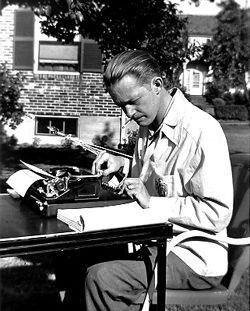
Robert Arthur Jr. was a writer and editor of crime fiction and speculative fiction known for his work with The Mysterious Traveler radio series and for writing The Three Investigators, a series of young adult novels.

Joel Townsley Rogers was an American writer who wrote science fiction, air-adventure, and mystery stories and a handful of mystery novels. He is most well known for his murder mystery The Red Right Hand, which is considered a cult classic of the genre and won the French literary award Grand Prix de Littérature Policière in 1951.

Lee Goldberg is an American author, screenwriter, publisher and producer known for his bestselling novels Lost Hills and True Fiction and his work on a wide variety of TV crime series, including Diagnosis: Murder, A Nero Wolfe Mystery, Hunter, Spenser: For Hire, Martial Law, She-Wolf of London, SeaQuest, 1-800-Missing, The Glades and Monk.
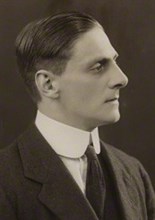
William Edward Vickers (1889–1965) was an English mystery writer better known under his pen name Roy Vickers, but used also the pseudonyms Roy C. Vickers, David Durham, Sefton Kyle, and John Spencer. He is the author of over 60 crime novels and 80 short stories. Vickers is now remembered mostly for his attribution to Scotland Yard of a Department of Dead Ends, specialized in solving old, sometimes long-forgotten cases, mostly by chance encounters of odd bits of strange and apparently disconnected evidence.
Richard Orson Lockridge was an American writer of detective fiction. Richard Lockridge with his wife Frances created one of the most famous American mystery series, Mr. and Mrs. North.

Elizabeth Sims is an American writer, journalist, and contributing editor at Writer's Digest magazine. She is a former correspondent for the Sarasota Herald-Tribune and author of two series of crime novels, including her Rita Farmer Mystery Series, originally published by St. Martin's Press Minotaur and Lillian Byrd Crime Series, originally published by Alyson Books. She has also published a stand-alone novel, Crimes in a Second Language, under her personal imprint, Spruce Park Press. Crimes in a Second Language was awarded the Silver Medal for General Fiction in the Florida Book Awards 2017. Her nonfiction works include You've Got a Book in You: A Stress-Free Guide to Writing the Book of Your Dreams, published by Writer's Digest Books, articles, short stories, poems, and essays for magazines and books. She also serves as a coach and mentor for new and aspiring writers and offers keynote speeches and presents workshops at writer's conferences around North America.

Charles E. Fritch was an American author and editor of fantasy, science fiction, horror and mystery fiction. He was the editor of Mike Shayne Mystery Magazine from 1979 until 1985. His short story, "Misfortune Cookie", was adapted for an episode of the television series The Twilight Zone.
















